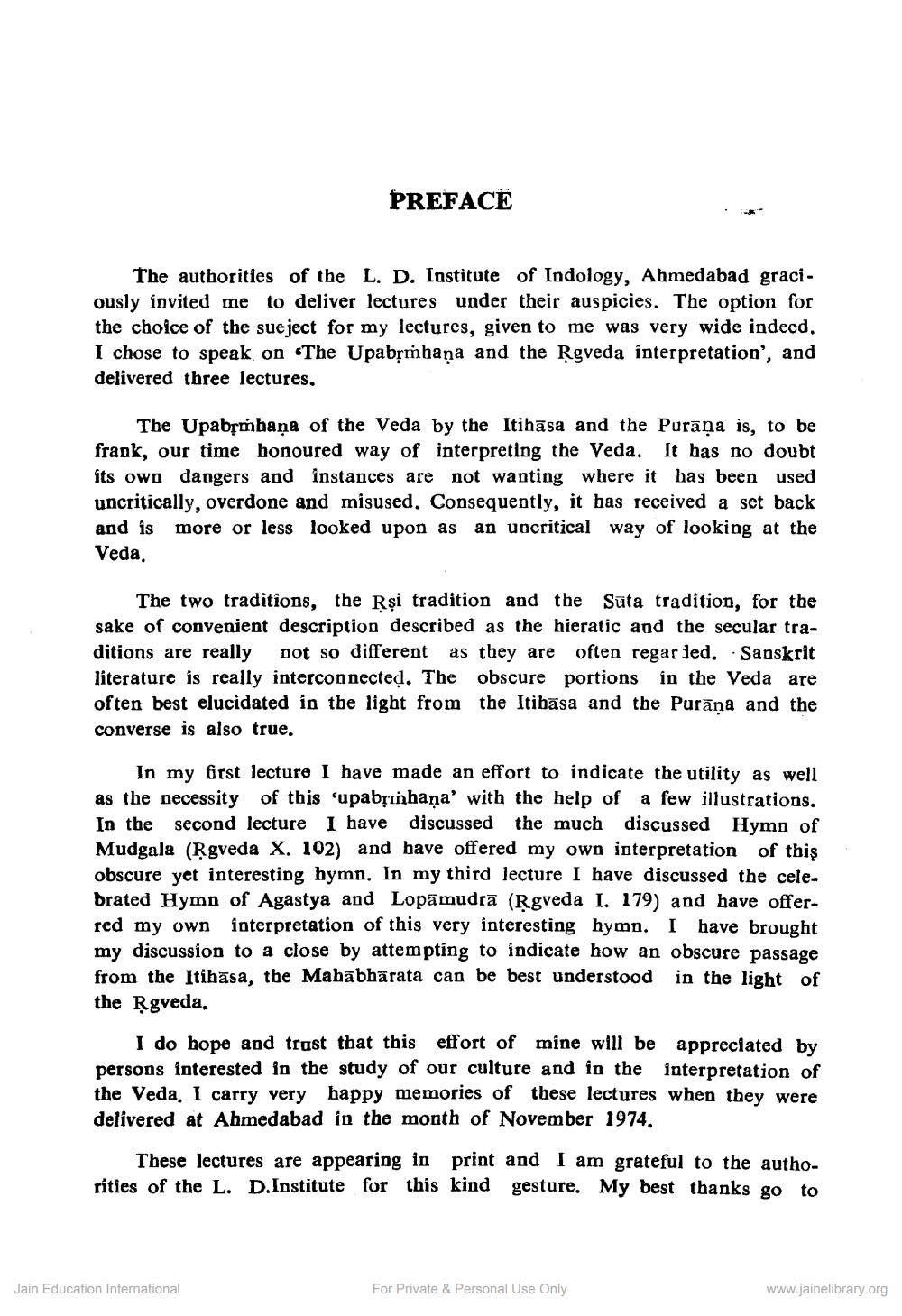________________
PREFACE
The authorities of the L. D. Institute of Indology, Ahmedabad graciously invited me to deliver lectures under their auspicies. The option for the choice of the sueject for my lectures, given to me was very wide indeed. I chose to speak on "The Upabrmbana and the Rgveda interpretation, and delivered three lectures,
The Upabrmbana of the Veda by the Itibāsa and the Purāņa is, to be frank, our time honoured way of interpreting the Veda. It has no doubt its own dangers and instances are not wanting where it has been used uncritically, overdone and misused. Consequently, it has received a set back and is more or less looked upon as an uncritical way of looking at the Veda,
The two traditions, the Rși tradition and the Suta tradition, for the sake of convenient description described as the hieratic and the secular traditions are really not so different as they are often regar led. Sanskrit literature is really interconnected. The obscure portions in the Veda are often best elucidated in the light from the Itibāsa and the Purāna and the converse is also true.
In my first lecture I have made an effort to indicate the utility as well as the necessity of this ‘upabțmhana' with the help of a few illustrations, In the second lecture I have discussed the much discussed Hymn of Mudgala (Rgveda X. 102) and have offered my own interpretation of this obscure yet interesting hymn. In my third lecture I have discussed the cetebrated Hymn of Agastya and Lopamudrā (Rgveda I. 179) and have offerred my own interpretation of this very interesting hymn. I have brought my discussion to a close by attempting to indicate how an obscure passage from the Itibāsa, the Mahabharata can be best understood in the light of the Rgveda.
I do hope and trust that this effort of mine will be appreciated by persons interested in the study of our culture and in the interpretation of the Veda. I carry very happy memories of these lectures when they were delivered at Ahmedabad in the month of November 1974,
These lectures are appearing in print and I am grateful to the authorities of the L. D. Institute for this kind gesture. My best thanks go to
Jain Education International
For Private & Personal Use Only
www.jainelibrary.org




